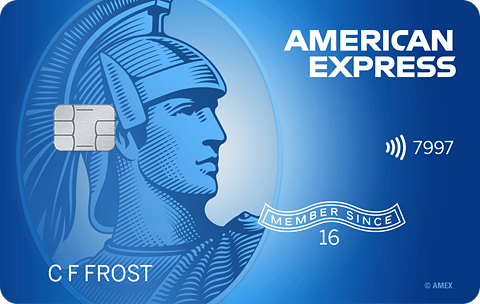- myFICO® Forums
- FICO Scoring and Other Credit Topics
- Understanding FICO® Scoring
- Re: Point in Time Vs. Time Series.
- Subscribe to RSS Feed
- Mark Topic as New
- Mark Topic as Read
- Float this Topic for Current User
- Bookmark
- Subscribe
- Mute
- Printer Friendly Page
Point in Time Vs. Time Series.
Is your credit card giving you the perks you want?
Browse credit cards from a variety of issuers to see if there's a better card for you.
- Mark as New
- Bookmark
- Subscribe
- Mute
- Subscribe to RSS Feed
- Permalink
- Report Inappropriate Content
Point in Time Vs. Time Series.
It is my understanding that FICO 8 is a point in time, whereas FICO 10-T is a Time Series and is affected by your behavior over time. Is this correct? So for example, if I had an Average Age of Accounts of 8 years, 5 open accounts with 100K among them with 99% utilization over the previous 12 months, but with a perfect payment record, and no derogatory marks. I would have a low FICO 8 score and a low FICO 10-T. If I then paid them all off, allowed one to report with a balance of $100 of $20,000, my FICO 8 score would increase, but my FICO 10-T would not change anywhere near as much.
I also understand that most card issuers do not use FICO 10-T, but what I was wondering was do they look at several months of history when deciding to offer credit? If so, how long a period do they consider? If I stayed AZEO for 3 months, would that be enough for an issuer to decide that I was now more responsible? Six months? Longer?
Just trying to get a general understanding of how the process works.
- Mark as New
- Bookmark
- Subscribe
- Mute
- Subscribe to RSS Feed
- Permalink
- Report Inappropriate Content
Re: Point in Time Vs. Time Series.
@ThomasJNewton wrote:It is my understanding that FICO 8 is a point in time, whereas FICO 10-T is a Time Series and is affected by your behavior over time. Is this correct? So for example, if I had an Average Age of Accounts of 8 years, 5 open accounts with 100K among them with 99% utilization over the previous 12 months, but with a perfect payment record, and no derogatory marks. I would have a low FICO 8 score and a low FICO 10-T. If I then paid them all off, allowed one to report with a balance of $100 of $20,000, my FICO 8 score would increase, but my FICO 10-T would not change anywhere near as much.
I also understand that most card issuers do not use FICO 10-T, but what I was wondering was do they look at several months of history when deciding to offer credit? If so, how long a period do they consider? If I stayed AZEO for 3 months, would that be enough for an issuer to decide that I was now more responsible? Six months? Longer?
Just trying to get a general understanding of how the process works.
FICO 10-T is supposed to look at trended data.
But it's way too early to figure out what that means, and how it will play out.































Total revolving limits 568220 (504020 reporting) FICO 8: EQ 689 TU 691 EX 682
- Mark as New
- Bookmark
- Subscribe
- Mute
- Subscribe to RSS Feed
- Permalink
- Report Inappropriate Content
Re: Point in Time Vs. Time Series.
@SouthJamaica wrote:FICO 10-T is supposed to look at trended data.
But it's way too early to figure out what that means, and how it will play out.
The question is not really about FICO 10-T, but about what period issuers consider when they look to offer credit cards. If one's balances were high for 12 months and then AZEO for 3 months is that enough for an issuer to consider one reformed, or does it need to be 6 months? 12 months? Twenty minutes after the new score posts.... :-)
- Mark as New
- Bookmark
- Subscribe
- Mute
- Subscribe to RSS Feed
- Permalink
- Report Inappropriate Content
Re: Point in Time Vs. Time Series.
@ThomasJNewton wrote:
@SouthJamaica wrote:FICO 10-T is supposed to look at trended data.
But it's way too early to figure out what that means, and how it will play out.
The question is not really about FICO 10-T, but about what period issuers consider when look to offer credit cards. If one's balances were high for 12 months and then AZEO for 3 months is that enough for an issuer to consider one reformed, or does it need to be 6 months? 12 months? Twenty minutes after the new score posts.... :-)
Current models are FLASH in time analysis. They don't look at historical data for balances, so your scenarios will not matter for your scores. Your score is what your balances are at the time of the pull. The only "reforms" are related to derogatory items like lates.
The FICO 10s are the only models that will look at trends and I agree it's way too early to even guess at that.
JOINED 4/2020
FICO 8 = 582, 620, 589 / Mortgage = 633, 526, 581
CURRENT PEAK *Thanks to the MF Community!
FICO 8 = 715, 711, 720 / Mortgage = 688, 696, 681

- Mark as New
- Bookmark
- Subscribe
- Mute
- Subscribe to RSS Feed
- Permalink
- Report Inappropriate Content
Re: Point in Time Vs. Time Series.
@TheKid2 wrote:Current models are FLASH in time analysis. They don't look at historical data for balances, so your scenarios will not matter for your scores. Your score is what your balances are at the time of the pull. The only "reforms" are related to derogatory items like lates.
The FICO 10s are the only models that will look at trends and I agree it's way too early to even guess at that.
Again, my question is about issuer behavior in using the FICO scores, more than about how the scores are calculated. Clearly issuers look at data other than FICO scores (for example how many cards were issued in a specific period), so what I am trying to understand, is given that FICO 8 is just a point in time, over what period do issuers look at one's credit behavior to decide whether to grant credit or not.
As a specific example: If one ran one's cards at 95% for 12 months, and then was AZEO and under 6% utilization on the remaining card, for a month, it seems unlikely that most issuer will grant a new card under that circumstance. What I am trying to understand, is would one need to be AZEO and under 6% for 2 months? 6 months? 12 months? Am I just wrong and card issuers do not look at history at all and only grant based on one's current situation?
- Mark as New
- Bookmark
- Subscribe
- Mute
- Subscribe to RSS Feed
- Permalink
- Report Inappropriate Content
Re: Point in Time Vs. Time Series.
@ThomasJNewton wrote:
@TheKid2 wrote:Current models are FLASH in time analysis. They don't look at historical data for balances, so your scenarios will not matter for your scores. Your score is what your balances are at the time of the pull. The only "reforms" are related to derogatory items like lates.
The FICO 10s are the only models that will look at trends and I agree it's way too early to even guess at that.
Again, my question is about issuer behavior in using the FICO scores, more than about how the scores are calculated. Clearly issuers look at data other than FICO scores (for example how many cards were issued in a specific period), so what I am trying to understand, is given that FICO 8 is just a point in time, over what period do issuers look at one's credit behavior to decide whether to grant credit or not.
As a specific example: If one ran one's cards at 95% for 12 months, and then was AZEO and under 6% utilization on the remaining card, for a month, it seems unlikely that most issuer will grant a new card under that circumstance. What I am trying to understand, is would one need to be AZEO and under 6% for 2 months? 6 months? 12 months? Am I just wrong and card issuers do not look at history at all and only grant based on one's current situation?
Your entire credit report is looked over to decide to approve or not. So in a way it is trended data as a whole to make decisions about risk. On the other hand. High balances are listed on credit reports or highest amount of credit you have owed on a specific credit card account or loan during a particular period of time . Running side by side closely with FICO 10's trending data's %'s Beta program I'll call it in a way. Until FICO 9 is the gold standard. And FICO 8 becomes an "older version". FICO 10 has a long way to go. The point (moment) in time is when as mentioned by @TheKid2 is when you pull your report right then. Like the flash on the camera. Picture taken. Your scores are changing constanly everyday when you get down to it. Once its reported that hey this bank pulled FICO 10 or 10T. We dont have much to go by really.
BK Free Aug25
- Mark as New
- Bookmark
- Subscribe
- Mute
- Subscribe to RSS Feed
- Permalink
- Report Inappropriate Content
Re: Point in Time Vs. Time Series.
@ThomasJNewton wrote:
@TheKid2 wrote:Current models are FLASH in time analysis. They don't look at historical data for balances, so your scenarios will not matter for your scores. Your score is what your balances are at the time of the pull. The only "reforms" are related to derogatory items like lates.
The FICO 10s are the only models that will look at trends and I agree it's way too early to even guess at that.
Again, my question is about issuer behavior in using the FICO scores, more than about how the scores are calculated. Clearly issuers look at data other than FICO scores (for example how many cards were issued in a specific period), so what I am trying to understand, is given that FICO 8 is just a point in time, over what period do issuers look at one's credit behavior to decide whether to grant credit or not.
As a specific example: If one ran one's cards at 95% for 12 months, and then was AZEO and under 6% utilization on the remaining card, for a month, it seems unlikely that most issuer will grant a new card under that circumstance. What I am trying to understand, is would one need to be AZEO and under 6% for 2 months? 6 months? 12 months? Am I just wrong and card issuers do not look at history at all and only grant based on one's current situation?
I think I get what you're asking. Let's talk about card issuers because that is where you seemed focused. One key assumption that it appears you have is a person is "looking at" your credit report. The reality is that is simply not the case, the initial decision is made by a computer. You can recon and have someone re-review your scores/report, but that is getting someone on the phone.
As @FireMedic1 points out, the individual issuers can look at any of a zillion things on your credit report via computer. Each issuer can have their own flavor of reading your reports and analyzing scores, the banks can do their own subset of approval decisions, they can even set some hard boundaries for approval, or they can pay FICO for a custom version of the reports. Like Chase rejects with the 5/24 rule or another may eliminate someone with a BK no matter what their score is. So, nobody can tell you specifically the answer to your question because specifics vary by issuer and there is no central published rules. Your score is only 1 factor.
Based on research and reading (mostly here), it's a fairly safe assumption that your scenarios are too specific. If you max your cards for 12 months and have 1 month at AZEO where your scores peak, you're not going to have any negative impact on the history of carrying a balance and your scores will go way up. On the flip side, if you havent' carried a balance for 10 years and you have 1 month where you max your cards your scores will be crushed. Your utilization behavior on carrying balances is immaterial, it doesn't matter.
That said, it's not your last scenario either. Some issuers do look at history like the Chase 5/24 rule. But, that is about seeking credit and opening new accounts, not your balances. We keep mentioning the newer FICO models because it is rumoured that those DO look at your trend for carrying balances. We just don't know enough about it, yet.
In summary, it doesn't matter how much balance you carry as long as the snapshot (credit pull) does not show it. If you're going for a specific card, research what they look at before you apply. They vary by issuer. Credit seeking and new accounts could eliminate you from approval no matter what your score is, some other scenarios could eliminate your approval. PS This all assumes you do not have any derogs on your report.
JOINED 4/2020
FICO 8 = 582, 620, 589 / Mortgage = 633, 526, 581
CURRENT PEAK *Thanks to the MF Community!
FICO 8 = 715, 711, 720 / Mortgage = 688, 696, 681

- Mark as New
- Bookmark
- Subscribe
- Mute
- Subscribe to RSS Feed
- Permalink
- Report Inappropriate Content
Re: Point in Time Vs. Time Series.
@TheKid2 wrote:I think I get what you're asking. Let's talk about card issuers because that is where you seemed focused. One key assumption that it appears you have is a person is "looking at" your credit report. The reality is that is simply not the case, the initial decision is made by a computer. You can recon and have someone re-review your scores/report, but that is getting someone on the phone.
Yes, that is what I have been trying to ask. :-) I did not think that a person reviewed regular applications, but was trying to determine if issuers when pulling credit reports had access to just the current month, or if they got several months worth of data for their rules engines to process.
As @FireMedic1 points out, the individual issuers can look at any of a zillion things on your credit report via computer. Each issuer can have their own flavor of reading your reports and analyzing scores, the banks can do their own subset of approval decisions, they can even set some hard boundaries for approval, or they can pay FICO for a custom version of the reports. Like Chase rejects with the 5/24 rule or another may eliminate someone with a BK no matter what their score is. So, nobody can tell you specifically the answer to your question because specifics vary by issuer and there is no central published rules. Your score is only 1 factor.
Yes, exactly that. It was some of the other factors I was trying to understand. The easy ones like 5/24 for Chase, having burned AmEx, breathing with the wrong cadence for Synchrony, :-) I knew. I was mostly trying to understand if most issuers looked at the data from just one point, or of they looked at more (not other factors, but data from more than one point in time).
Based on research and reading (mostly here), it's a fairly safe assumption that your scenarios are too specific. If you max your cards for 12 months and have 1 month at AZEO where your scores peak, you're not going to have any negative impact on the history of carrying a balance and your scores will go way up. On the flip side, if you havent' carried a balance for 10 years and you have 1 month where you max your cards your scores will be crushed. Your utilization behavior on carrying balances is immaterial, it doesn't matter.
I understood that they scores for everything except may FICO 10-T were point in time, it was more about did issuers rules engines look at more than the data from a point in time.
That said, it's not your last scenario either. Some issuers do look at history like the Chase 5/24 rule. But, that is about seeking credit and opening new accounts, not your balances. We keep mentioning the newer FICO models because it is rumoured that those DO look at your trend for carrying balances. We just don't know enough about it, yet.
In summary, it doesn't matter how much balance you carry as long as the snapshot (credit pull) does not show it. If you're going for a specific card, research what they look at before you apply. They vary by issuer. Credit seeking and new accounts could eliminate you from approval no matter what your score is, some other scenarios could eliminate your approval. PS This all assumes you do not have any derogs on your report.
That is exactly what I wanted to know. Thanks so much!